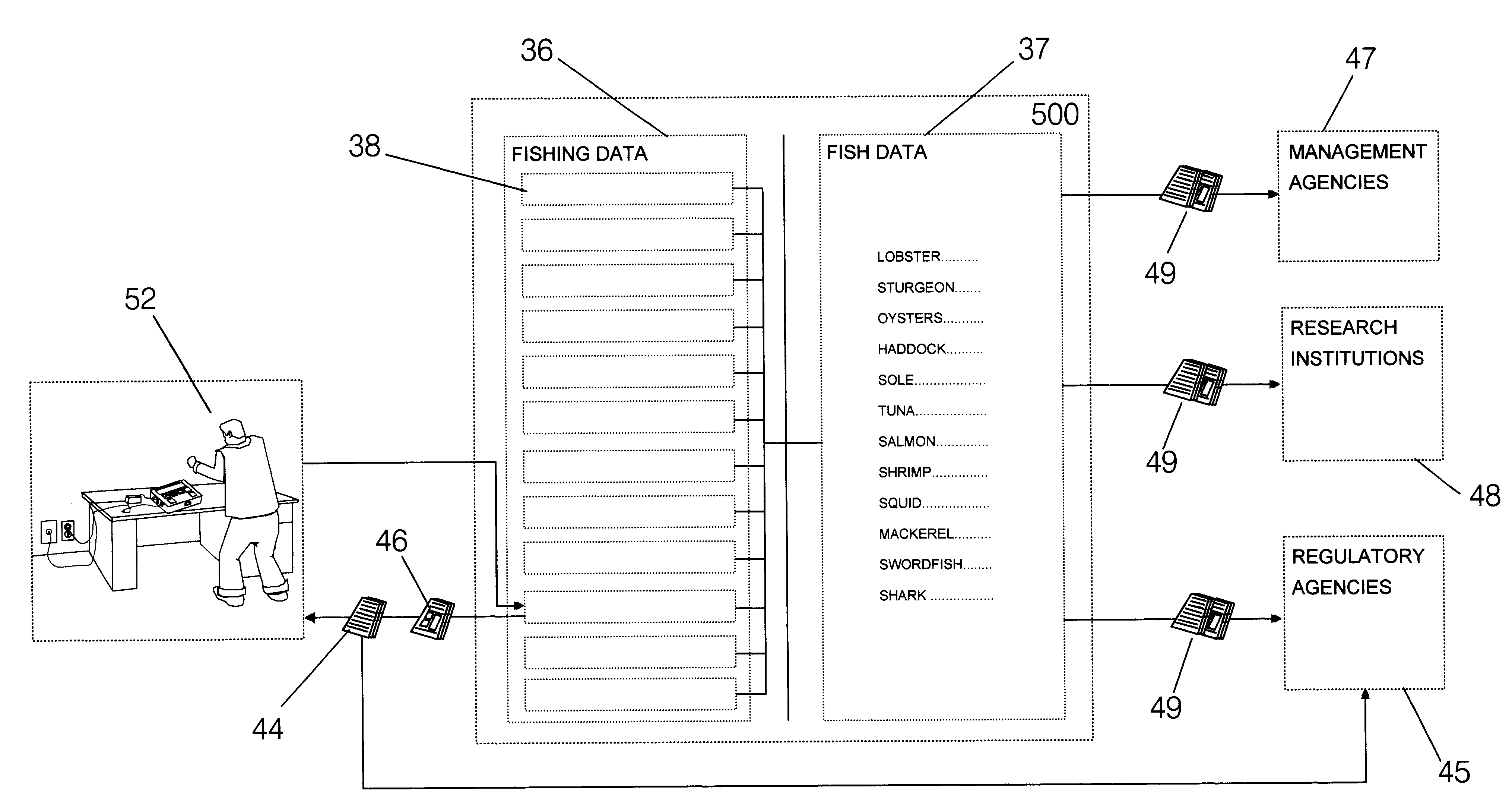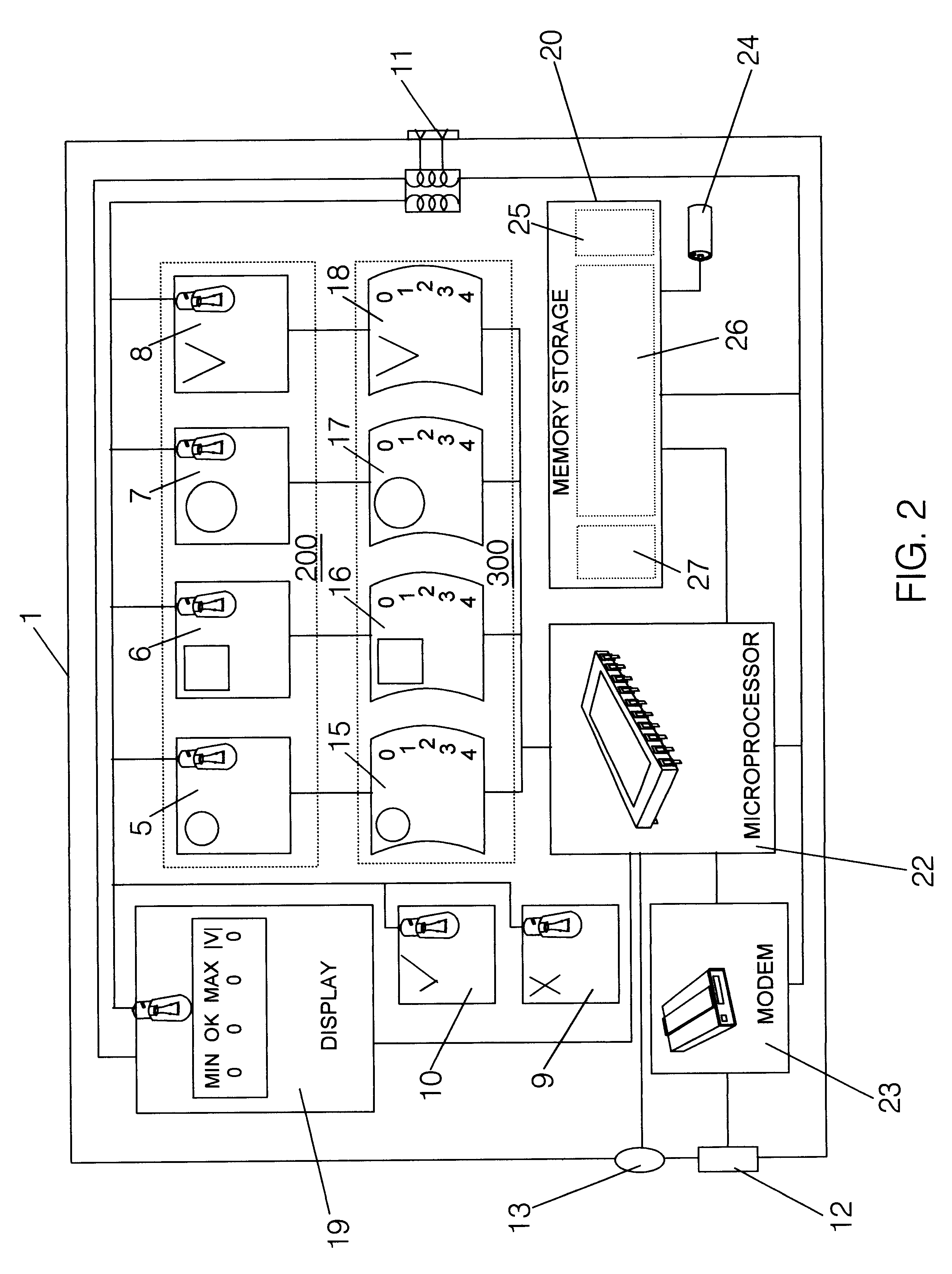Method of data collection for fisheries management
a fisheries management and data collection technology, applied in the field of fisheries, can solve the problems of no reliable "catch and release data", no current practical means of obtaining such data, and loss of accurate information about fish stocks and the condition of fishing grounds
- Summary
- Abstract
- Description
- Claims
- Application Information
AI Technical Summary
Benefits of technology
Problems solved by technology
Method used
Image
Examples
Embodiment Construction
The Preferred Embodiment of the present invention relates to lobster fishing. Just as almost all fishing is now strictly regulated, lobstering along the northeast coast of the United States is currently subject to a set of regulatory restrictions limiting the times and places of fishing and, in particular, specifying by size, type, and condition the lobster that may and may not be harvested. Although the rules vary with jurisdiction, they generally include restrictions on lobsters that are too small to be harvested, lobsters that are too large to be harvested, and on females bearing eggs or identified as having borne eggs--referred to as "v-notched females." (Current regulations mandate that lobstermen cut a v-notch into the tail of any egg-bearing female lobster caught and then release it, thenceforth identifying that lobster as a proven breeder.)
Setting out to harvest the catch of his traps, the lobsterman brings a data-collection-and-storage-device designed specifically for lobst...
PUM
 Login to View More
Login to View More Abstract
Description
Claims
Application Information
 Login to View More
Login to View More - R&D
- Intellectual Property
- Life Sciences
- Materials
- Tech Scout
- Unparalleled Data Quality
- Higher Quality Content
- 60% Fewer Hallucinations
Browse by: Latest US Patents, China's latest patents, Technical Efficacy Thesaurus, Application Domain, Technology Topic, Popular Technical Reports.
© 2025 PatSnap. All rights reserved.Legal|Privacy policy|Modern Slavery Act Transparency Statement|Sitemap|About US| Contact US: help@patsnap.com



